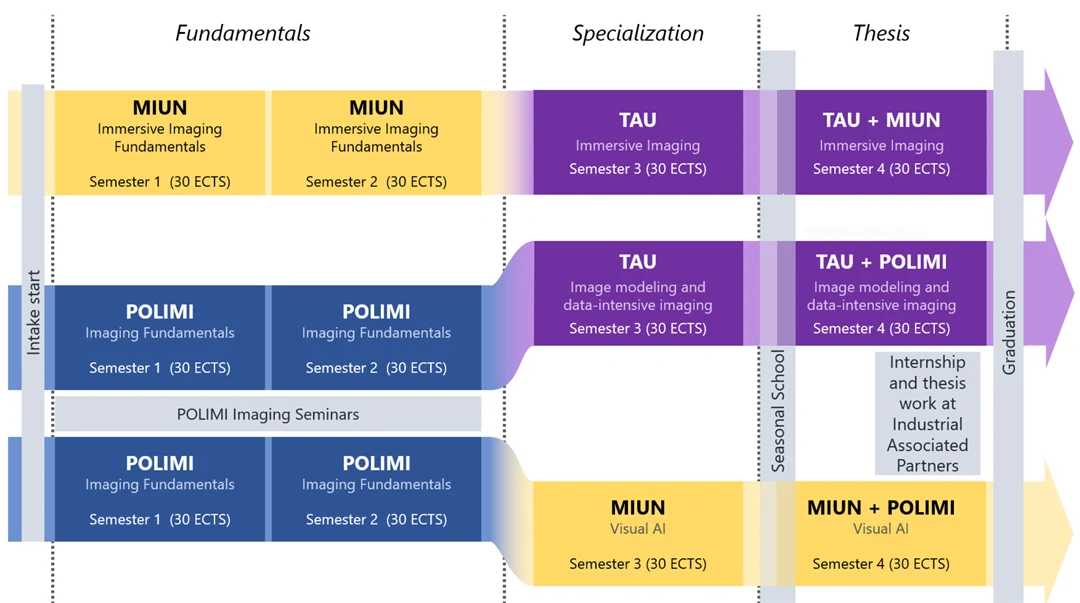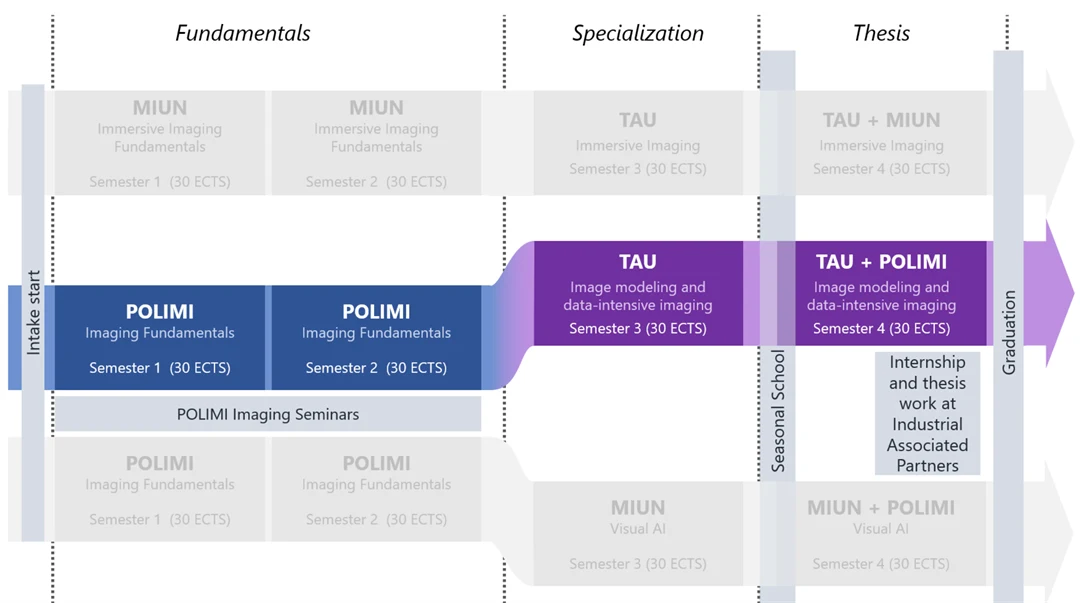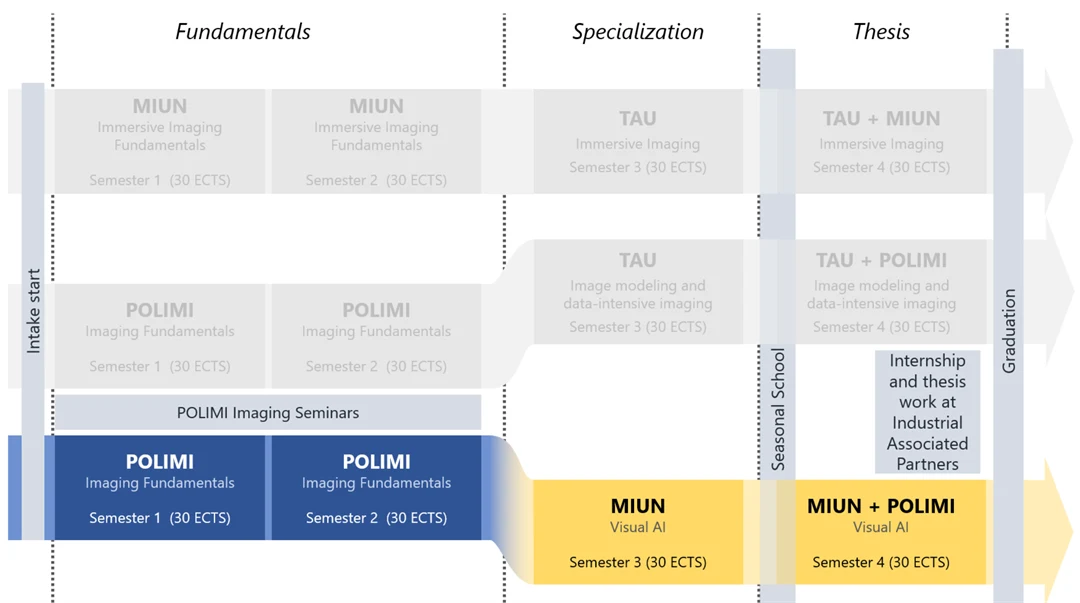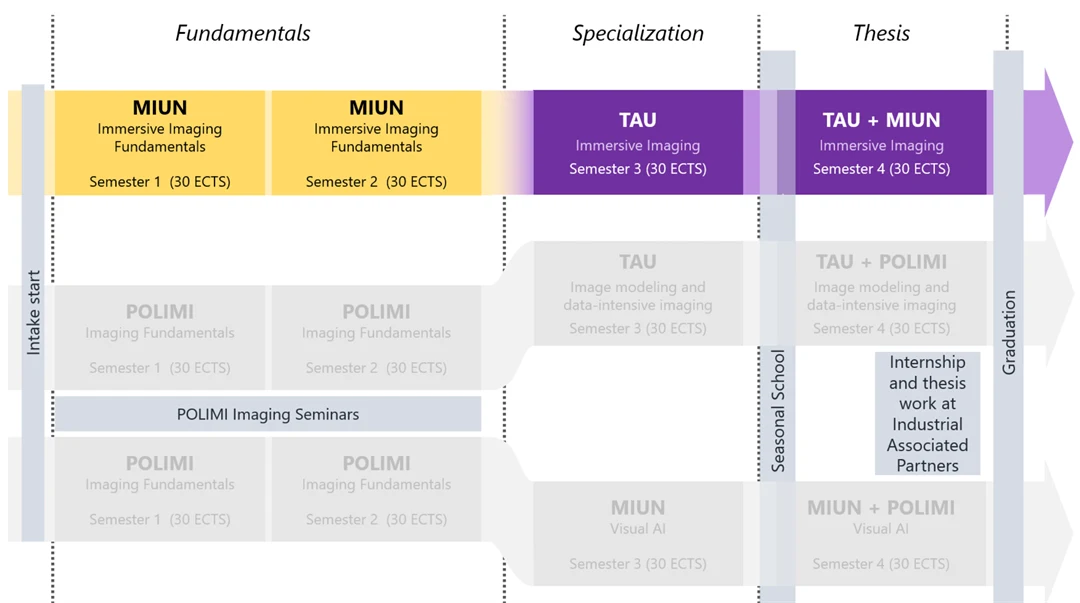About the Erasmus Mundus Joint Master's Programme in Imaging, 120 credits
The Erasmus Mundus Joint Masters (EMJM) in Imaging Programme offers a comprehensive education in multi-dimensional image and video processing with a specific emphasis on machine learning and deep learning techniques.
The Erasmus Mundus Joint Masters (EMJM) in Imaging Programme equips students with a strong theoretical foundation in these fields and a deep understanding of image, video, and multi-dimensional visual signals. The program's primary focus revolves around harnessing machine learning, deep learning, and artificial intelligence tools for visual signal processing, preparing students to comprehend the capabilities and limitations of visual AI technologies.
Training the New Generation of Experts
This program is designed to train the new generation of experts in imaging, paving the way for innovative developments in various fields. Students embark on a transformative educational journey across three distinguished universities: depending on the assigned track, they commence either at Politecnico di Milano (POLIMI), Italy or at Campus Sundsvall - Mid Sweden University (MIUN), Sweden for their foundational year, followed by a year at either Tampere University (TAU), Finland, or Campus Sundsvall - Mid Sweden University (MIUN), Sweden. The curriculum covers diverse aspects of image processing and telepresence applications, enabling students to contribute to sustainable social development, and engage with the global surge in augmented and virtual reality technologies. Graduates will be ready to meet the burgeoning industry demand for image processing, document classification, and immersive visual media content creation.

Three Universities – Three Tracks
The program's strength lies in the collaborative efforts of three prominent universities: Tampere University (TAU), Politecnico di Milano (POLIMI), and Mid Sweden University (MIUN). Depending on the assigned track, admitted students start at either POLIMI or MIUN and spend their first year there, where they lay the groundwork for their expertise.
In their second year, students can continue their education at:
- Mid Sweden University (Campus Sundsvall), if they are enrolled on “Visual AI” track, or
- Tampere University, if they are enrolled on either "Immersive Imaging" or “Image modelling and data-intensive imaging” tracks.
More information about the tracks is given on the track pages. The collaborative approach ensures a well-rounded educational experience, incorporating diverse perspectives and research resources. Students will complete their master's theses under the guidance of senior researchers from
- both POLIMI and MIUN – for the “Visual AI” track, or
- both POLIMI and TAU – for the “Image modelling and data-intensive imaging” track, or
- both MIUN and TAU – for the "Immersive Imaging" track.
Internationalization and Mobility
Through structured progression, students can participate in Politecnico di Milano´s imaging seminars and a winter school during their enrollment, with support from the program's partner universities. This international network fosters connections and research collaboration. Additionally, the program offers avenues for internships, further broadening students' global exposure and enhancing their employability.
Tracks depending on your residency
Erasmus Mundus Joint Master rules require compulsory physical mobility for all enrolled students (EMJM scholarship-holders or not) consisting of a minimum of two study periods in two countries, of which at least one must be a EU Member State or third country associated to the Programme. These two countries must be different from the country of residence of the student at the enrolment stage.
For example:
- if you are a student residing in Italy, Finland, or Sweden, you can be enrolled on any one of the three possible tracks, but you might be required to go to the third consortium partner university in your final term.
- e.g., Students residing in Italy can be enrolled on the Visual AI track, but they need to spend their last term at Tampere University to satisfy the EMJM mobility requirements.
- if you are a student residing elsewhere in the world (outside Sweden, Finland, or Italy), you can be enrolled on any one of the three tracks, and you can indicate your preference during the application.
Applicants
This program is tailored for individuals passionate about the exciting field of imaging and its potential to shape the future. It is ideally suited for those interested in visual AI technologies, image processing, and telepresence applications.
Prospective students should possess a strong foundation in relevant disciplines such as computer science, engineering, or information and communication technologies.
Please refer to the Application and Admission page for the full list of requirements.
Post-Graduation Path
After successfully completing the program, graduates unlock a multitude of opportunities in a wide range of industries. They can find employment in manufacturing, gaming companies, medical technology, healthcare, automotive industry, urban planning, technology consulting, and academia. Their skills are in high demand across sectors that require advanced image analysis and processing. Graduates can contribute to the development of cutting-edge technologies and play a pivotal role in advancing the societal impact of imaging in either academia or industry.


